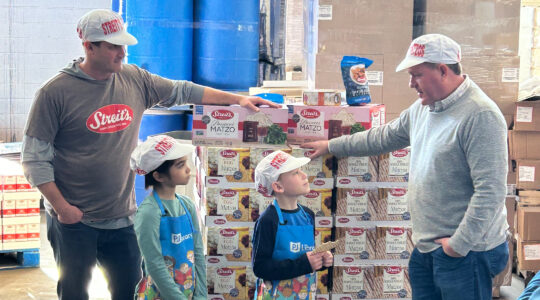Shabbat at my synagogue is generally a time for warm greetings, handshakes and hugs as congregants catch up on the week gone by and take stock of what lies ahead. This week will likely be different.
An unwelcome visitor has wandered into our midst. The global coronavirus outbreak hit home in our community this week, causing several Jewish day schools to close and synagogues across the New York area to halt services.
Nearly all of the confirmed cases of the disease in the state can be traced to an attorney in his 50s who lives and prays in New Rochelle. The interwoven patterns of the daily life of Modern Orthodox Jews – so often a source for joy and connection – now fall under the cold, harsh glare of epidemiology. In happy times and sad, we gather as a community. We send our children to many of the same schools, pray at one another’s synagogues, show up at the same conferences. The degrees of separation between us are vanishingly few. It’s no surprise that members of the Westchester family were at the same funeral as an educator at a yeshiva in Elizabeth, N.J., now under self-quarantine.
Our communities are even more tightly woven at the neighborhood level.
“Decades ago, a perceptive observer wrote, only half in jest, that Orthodoxy’s vitality rested upon the presence of sidewalks,” Steven Bayme, the American Jewish Committee’s director of Contemporary Jewish Life, told The Jewish Week. “Walking to and from synagogue on Shabbat with friends and neighbors, Orthodox Jews could converse and strengthen relationships and thereby create a robust and tightly-knit community. Similarly Orthodox day schools were enhanced by the nearby presence of a kosher pizza parlor.”
Now, in so many subtle and not-so-subtle ways, we are being asked to isolate ourselves from the community that is reflexively, instinctually our first source of solace and support.
Smaller community celebrations, like the bris of a newborn boy, are quietly being moved underground, from synagogue social halls to quiet living rooms with sparse guest lists. B’nai mitzvah ceremonies that were meant to take place amongst the company of hundreds are now being celebrated “virtually.” Trips to Israel are being postponed or cancelled.
And yet the challenge of the coronavirus surfacing here — in our schools and synagogues — simultaneously recounts our community’s greatest strengths. On one hand, we follow the advice of health professionals in keeping one another safe, even if it means sacrificing cherished religious and social rituals. On the other hand, we find ourselves more interconnected than ever, as we exchange the names of loved ones who need our prayers and send out public calls to recite the Mi Sheberach prayer for healing with extra fervor.
Fittingly, the prayer calls for “a healing of the spirit and a healing of the body.” As Bayme put it, “the spiritual bonds and rewards of community surely will withstand and outlast the challenges posed by the coronavirus.”
(This article was excerpted from a longer article, “The Modern Orthodox community is tested, but not bested, by the coronavirus,” at nyjw.test)
The New York Jewish Week brings you the stories behind the headlines, keeping you connected to Jewish life in New York. Help sustain the reporting you trust by donating today.




